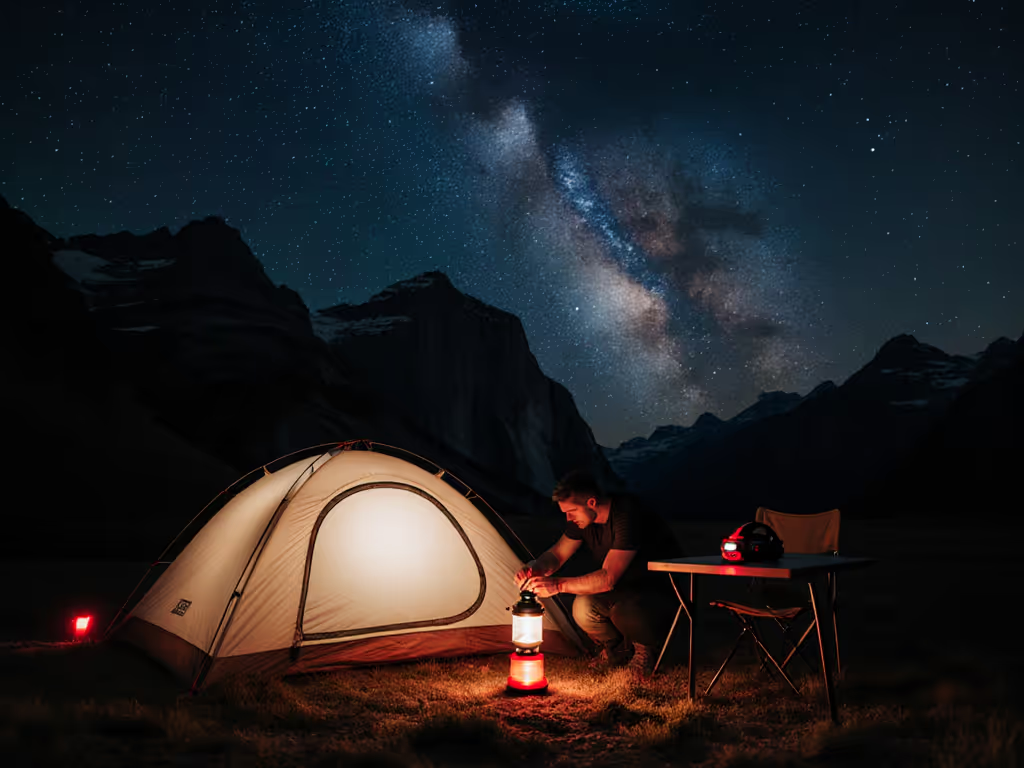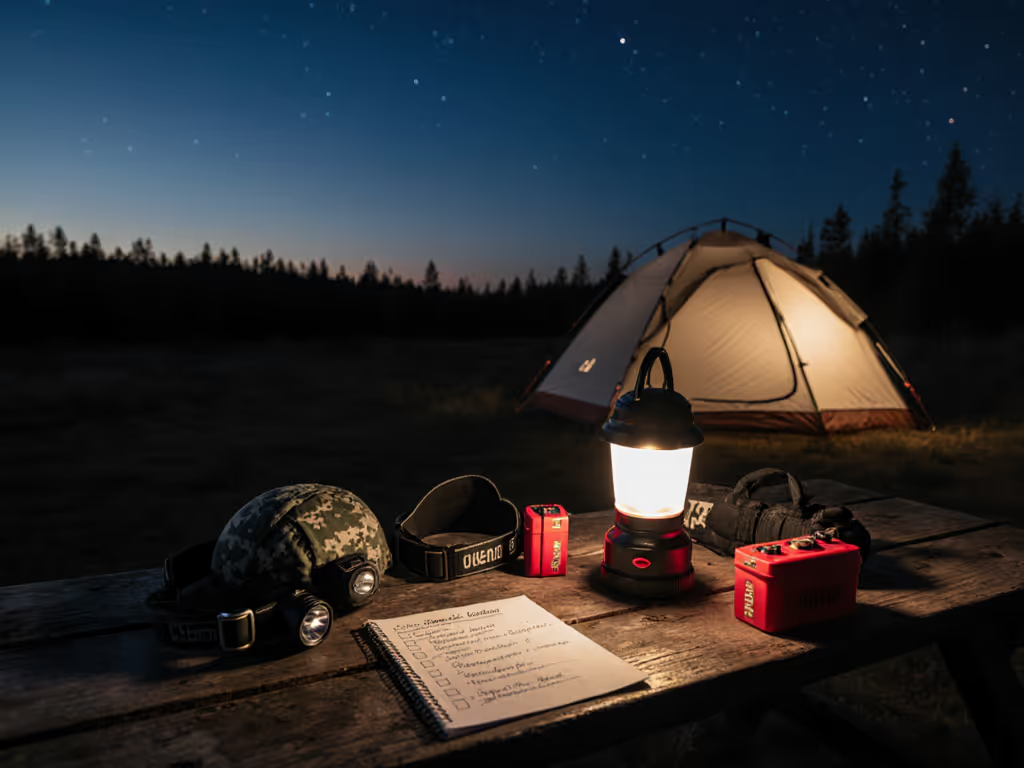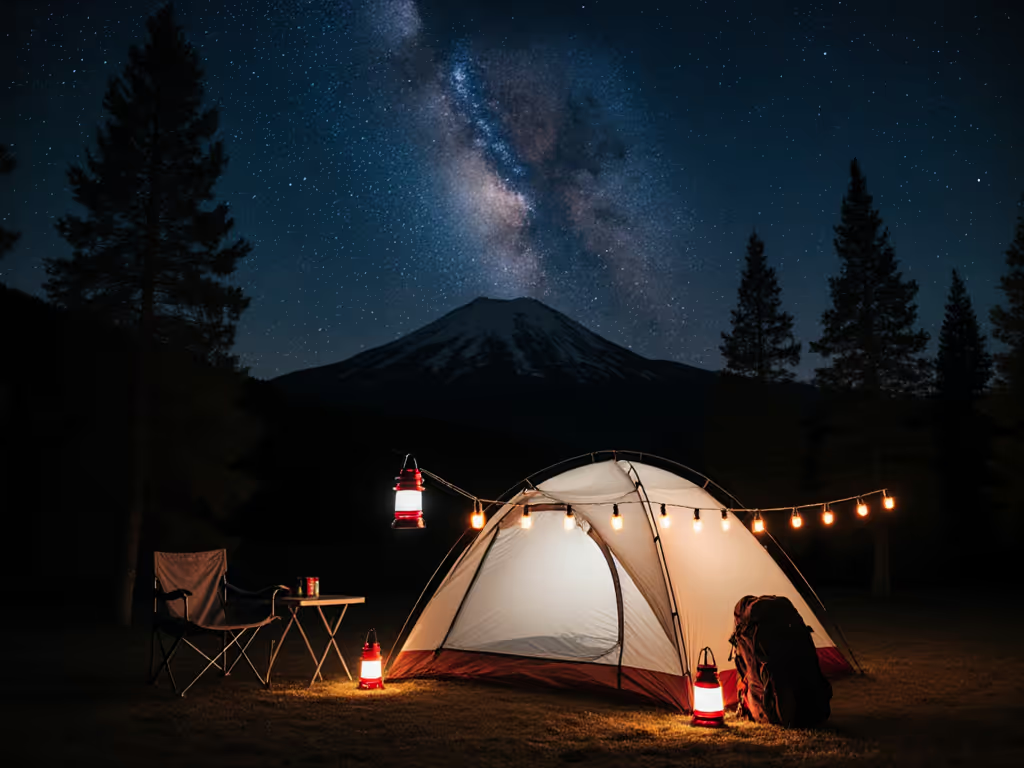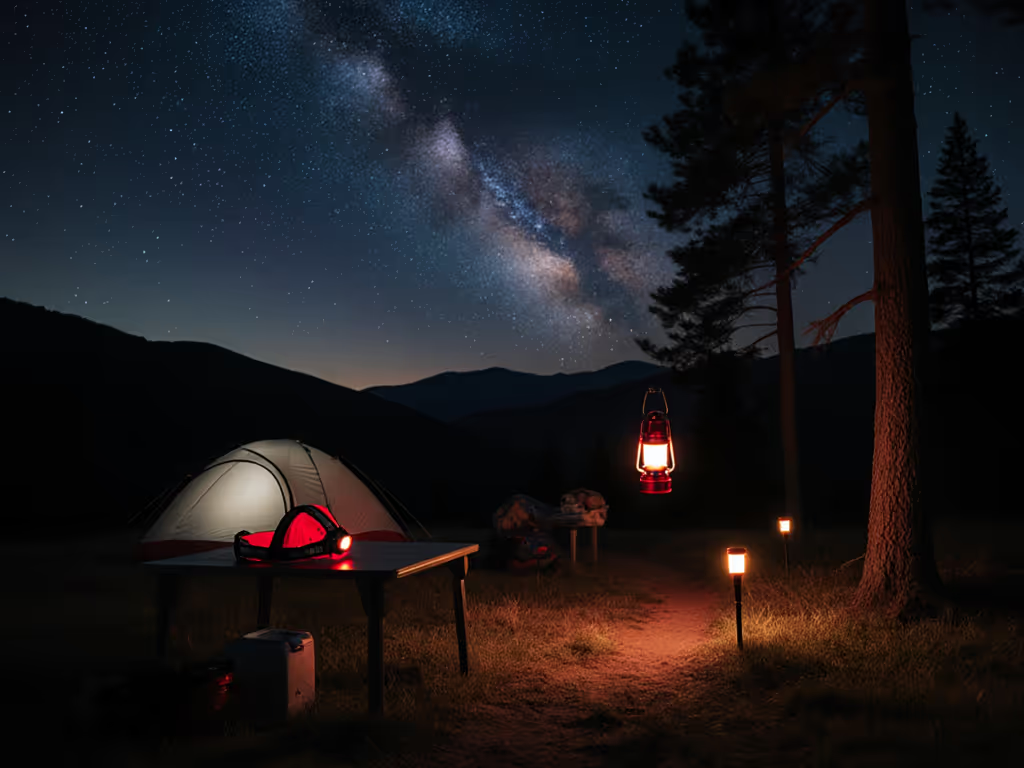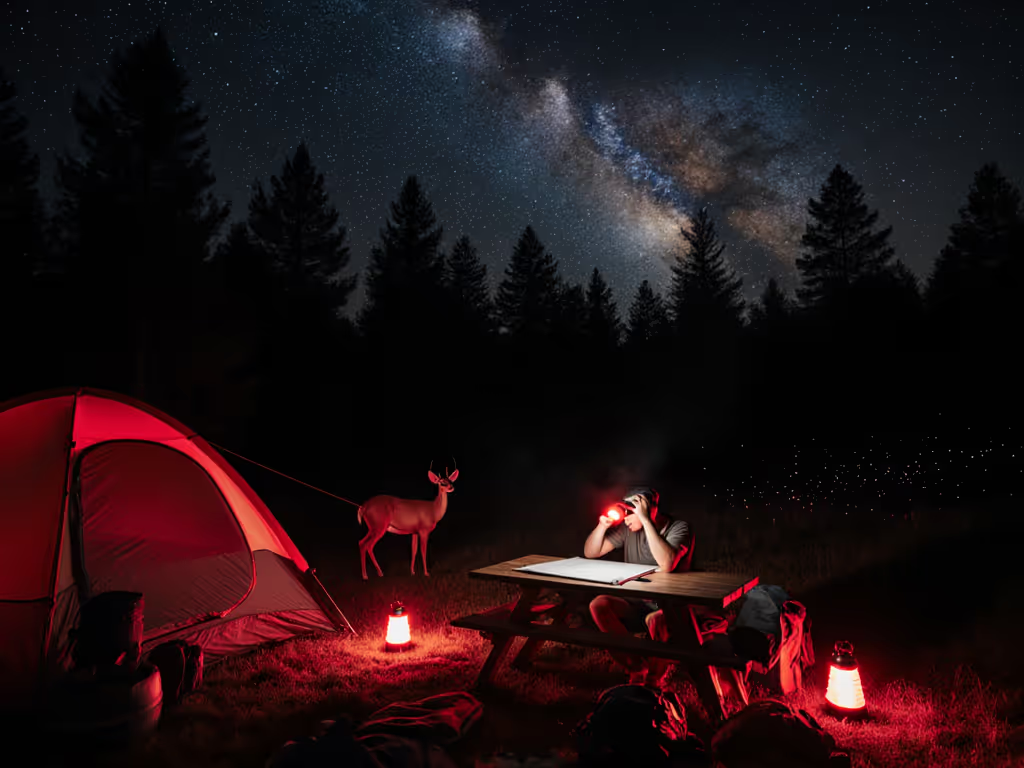
IP Rating Camping Lights Guide: Waterproof Or Not?
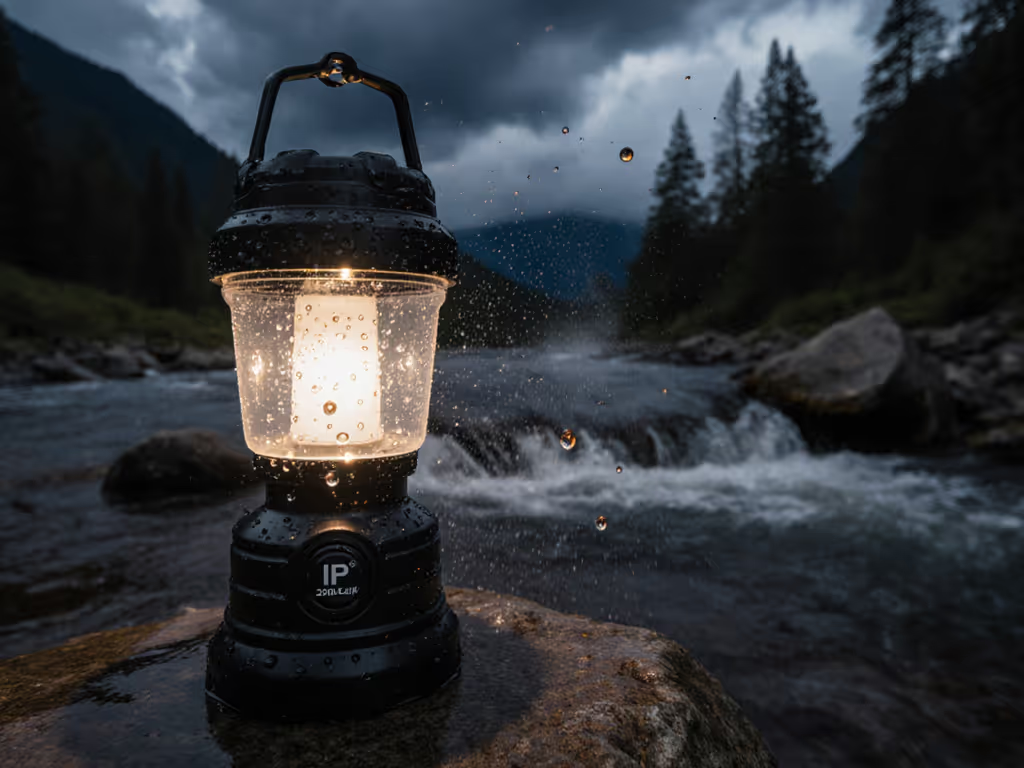
When you're choosing IP rating camping lights, it is not just about whether they survive rain, it is about how they serve your campsite's harmony. As a designer who studies how light shapes human experience outdoors, I've learned that camping tent lights should blend into the night, not battle it. Gentle light makes every voice easier to hear, whether you're sharing stories or tucking in a restless child. That night, a teaching moment with my toddler under harsh camp lights reshaped my entire approach: light is hospitality, and its protection rating determines how well it can fulfill that role without becoming a burden.
Understanding IP Ratings: More Than Just Waterproofing
Let's cut through the confusion. IP stands for Ingress Protection, a global standard that quantifies how well an electrical enclosure withstands environmental intrusions. This isn't marketing fluff; it's a measurable standard developed by the International Electrotechnical Commission. When you're evaluating weather-resistant lights for your next trip, understanding this rating system prevents disappointment when conditions change.
How does the IP rating system actually work?
IP ratings consist of two digits: IPXX. The first number (0-6) indicates protection against solid particles like dust and sand. The second number (0-9) shows resistance to liquids. Higher numbers mean better protection. For camping lights, you'll mostly encounter ratings between IP44 and IP68.
Think of it as a lighting passport: the entry requirements for different environments. Your minimalist backpacking setup needs different protection than a family basecamp near a lakeshore. The rating tells you where your lights can safely travel with you.
What does IPX4 mean for campers?
When you see "IPX4" (notice the X replacing the first digit), it means the manufacturer only tested the water resistance component. The "X" indicates unknown or untested solid particle protection. IPX4 specifically means protection against water splashes from any direction.
This rating works for basic camping LED light applications such as:
- Headlamps used in light rain
- Tent lanterns in dry conditions with occasional moisture
- Lighting hung under a tarp during mild weather
But it's insufficient for:
- Lights directly exposed to heavy rain
- Gear stored near water sources
- Lights subjected to sand or dust storms
Which IP rating do I really need for camping?
The right rating depends on your specific camping style:
- Backpackers & minimalist campers: IP65 or higher. Dust protection is critical when packing lights in gear sacks, and you need reliable splash resistance.
- Family car campers: IP67 minimum. Kids spill drinks, tents get condensation, and afternoon storms arrive unannounced.
- Near-water camping (lakes, rivers, ocean): IP68 for continuous immersion protection.
- Desert environments: Focus on the first digit (dust protection), IP6X is essential.
I've seen too many campers assume "water-resistant" means "storm-proof" only to discover their lantern failing during a sudden downpour. Don't be that person huddled in a tent with a dead light while rain pours in.
Remember: An IP67 rating means your light can survive accidental immersion in up to 1 meter of water for 30 minutes (perfect for that moment when your kid knocks the lantern into the creek).
How do IP65, IP67, and IP68 differ practically?
IP65: Dust-tight and protected against low-pressure water jets (like rain or hose spray). Ideal for most car camping scenarios where lights stay under shelter.
IP67: Dust-tight and protected against temporary immersion (up to 1m for 30 minutes). My recommendation for family campers, since it handles accidental drops in water and heavy rain.
IP68: Dust-tight and protected against continuous immersion beyond 1m. Essential for marine environments or lighting directly exposed to water features.
Understanding these distinctions prevents both under-protection (failed gear) and over-engineering (carrying unnecessarily heavy lights). Your warm 2700K LED lantern shouldn't weigh more than necessary just to achieve a higher rating than your usage requires.
Is "waterproof" the same as having a high IP rating?
No, and this is where manufacturers often mislead. "Waterproof" is a marketing term with no standardized meaning, while IP ratings offer specific, testable protection levels. Many lights claiming to be "waterproof" only meet IPX4 standards (splash resistant), failing dramatically when submerged.
When evaluating claims about waterproof ratings, always look for the actual IP code. If it's not specified, assume minimal protection. Authentic IP ratings appear molded into the product housing or in technical documentation, not just on marketing materials.
Choosing Lights That Respect Your Campsite
Beyond technical protection, consider how your lighting choices affect the entire camp experience. High-CRI, warm-toned lights do more than help you read a map; they preserve everyone's night vision and minimize disruption to wildlife. When your lantern has appropriate IP protection, you avoid the temptation to crank brightness to compensate for water-spotting on lenses.
I've watched campers struggle with inadequate lighting during evening meals, their cool-white lanterns creating glare that ruins conversation and stargazing. When lights fail due to poor environmental protection, people default to brighter, harsher alternatives that disrespect neighboring campsites and wash out the Milky Way.
Integrating IP knowledge into your lighting philosophy
- Match protection to your environment: Don't hike with IP68 lights if IP65 suffices (every gram counts).
- Prioritize warm tones: Even the most waterproof light becomes problematic if it's 6000K blue-white.
- Consider beam control: Proper shielding matters as much as IP rating for campsite etiquette.
- Plan for condensation: High humidity creates water exposure even without rain, so look for lights with moisture vents.
The Human Factor in Lighting Protection
Technical specs alone won't create a peaceful campsite. That night with my toddler taught me that light quality affects human rhythms as much as technical performance. A perfectly waterproof light still fails if its color temperature disrupts sleep. True protection considers both environmental factors and human needs.
When shopping for camping tent lights, examine how the manufacturer addresses real-world use:
- Are there drainage ports to prevent trapped moisture?
- Does the light maintain consistent color temperature when wet?
- How does the switch interface function with wet hands?
Further Exploration
Understanding IP ratings is just one piece of thoughtful camp lighting. I encourage you to explore how these technical specifications interact with other critical factors like color rendering index (CRI), correlated color temperature (CCT), and beam control. These elements together create lighting that serves your camp experience rather than dominating it.
For your next trip, consider how your lights might affect not just your own group, but neighboring campers and the natural environment. When we choose protection ratings knowingly (neither under-specifying nor over-engineering), we create lighting solutions that honor the space we're borrowing from the wilderness.
Light is hospitality. May your lights welcome, rather than intrude, wherever you camp under the stars.

